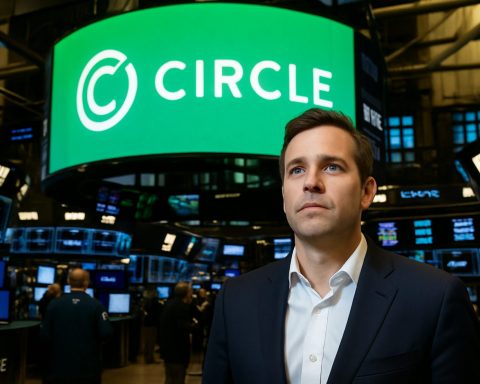- XRP’s daily transfer volumes soared to an average of $2.28 billion, marked by speculative enthusiasm and Ripple’s strategic sales tactics.
- Ripple’s influence is evident through significant token sales, notably by co-founder Chris Larsen, and strategic escrow releases that impact market conditions.
- Bitcoin and Ethereum remain leaders in transfer volume, with Bitcoin at $64.03 billion per day and Ethereum at $5.67 billion, showcasing strong institutional interest and DeFi utility.
- XRP Ledger is evolving with new tools for stablecoin issuance, tokenization, and EVM compatibility, although still trailing behind Ethereum and Bitcoin in genuine adoption.
- The Automated Market Maker on XRP Ledger saw a massive 3,100% increase in activity, indicating potential growth in usage.
- XRP’s growth story is one of balancing speculative movements with genuine adoption, as market dynamics play a crucial role in its evolving landscape.
Beneath the relentless update cycle of crypto markets, XRP emerges from the shadows of skepticism into a beacon of speculative success. The once-modest daily transfer volumes of the XRP Ledger, usually meandering between $300 million and $1 billion, have recently catapulted to an astonishing average of $2.28 billion daily. This surge, coinciding with the political shifts marked by Donald Trump’s re-election in 2024, unveils an intriguing tale of momentum and maneuvering within the digital currency realm.
At the heart of this upswing dwells a complex web of influences. Not merely a case of adoption-driven usage, these volume spikes often reflect speculative enthusiasm and strategic moves, especially from Ripple, a pivotal figure behind XRP.
Ripple’s Strategic Moves
Ripple’s significant influence is evident in the transfer volumes, with massive token sales stimulating fluctuations. Chris Larsen, Ripple’s co-founder, unloaded over $116 million worth of XRP by early 2025, a staggering continuation of his hefty sales since 2017. Meanwhile, Ripple’s sales strategy focuses on optimizing market conditions; it traditionally ramps up escrow sales during bullish tides. Beginning in 2017, Ripple locked 55 billion XRP into escrow, releasing up to 1 billion monthly. Unused tokens silently return to their digital vault, a tactic visible in the dancing transfer volumes.
These movements, whether inspired by speculative surges or structured sales, paint a vibrant picture of activity, though not necessarily organic growth in payment utility.
Bitcoin and Ethereum: Titans of Transfer Volume
While XRP’s recent metrics command attention, Bitcoin and Ethereum steady the cryptocurrency ship with consistent powerhouse performance, dwarfing XRP in daily transfer volume. Bitcoin reigns with a staggering recent average of $64.03 billion per day, fueled by institutional enthusiasm and speculative trades. Ethereum, with its robust DeFi network, follows with a 30-day average of approximately $5.67 billion daily, showcasing genuine utility and adoption.
XRP’s Evolving Ledger Innovations
Despite lagging behind its peers, XRP’s Ledger is evolving. New tools now facilitate stablecoin issuance and dive into the realm of tokenization, while EVM compatibility opens doors to further integrations. Notably, the ledger’s Automated Market Maker observed a 3,100% increase in Q4 2024, hinting at burgeoning usage.
Yet, these cutting-edge steps barely scratch the surface compared to Ethereum and Bitcoin. As XRP rallies forward, it stands at the brink of untapped potential meeting market reality.
In sum, while XRP’s newfound surge in transfer volume might suggest exciting prospects, the intricate dance between strategic ripple effects and the pursuit of genuine adoption continues. As ever, market participants tread carefully, discerning momentary glimmers from sustainable innovation.
The Untold Story of XRP: Unveiling Hidden Forces Behind Its Meteoric Rise
Understanding the Surge in XRP’s Transfer Volume
In recent months, XRP has witnessed a significant surge in its daily transfer volume, climbing to an impressive average of $2.28 billion. This dramatic increase coincides with the re-election of Donald Trump in 2024 and raises questions about the underlying factors catalyzing this growth. While some may attribute it to increased adoption, it’s crucial to recognize that much of this volume is driven by speculative activity and strategic maneuvers from Ripple, XRP’s managing company.
Ripple’s Strategic Influence
Ripple, a key player behind XRP, has an outsized influence on its transfer volumes. One of the strategic moves includes substantial token sales. Chris Larsen, Ripple’s co-founder, sold over $116 million worth of XRP by early 2025. Ripple’s strategy of locking 55 billion XRP into escrow and releasing up to 1 billion monthly allows it to act strategically based on market conditions. Unused tokens are returned to escrow, affecting the circulating supply and impacting market perceptions of scarcity and value.
Bitcoin and Ethereum’s Dominance
Despite XRP’s impressive performance, it still pales compared to Bitcoin and Ethereum, which continue to dominate cryptocurrency transfer volumes. Bitcoin, with an average daily transfer volume of $64.03 billion, benefits from robust institutional interest and speculative trading. Ethereum’s 30-day average stands at $5.67 billion daily, underscoring its genuine utility built on a solid DeFi ecosystem. These metrics highlight the different stages at which these cryptocurrencies operate.
Innovations on the XRP Ledger
XRP is not without innovation. The XRP Ledger is evolving to include stablecoin issuance capabilities and tokenization, indicating a shift towards more diverse applications. With EVM compatibility, XRP positions itself for broader integrations. The ledger’s Automated Market Maker, which saw a 3,100% increase in Q4 2024, signals growing interest and utilization within the XRP ecosystem.
Pressing Questions and Answers
What is EVM compatibility in XRP?
EVM, or Ethereum Virtual Machine, compatibility enables XRP to leverage Ethereum-based smart contracts, broadening its use cases and potential integrations across blockchain platforms.
Can XRP catch up to Bitcoin and Ethereum in utility?
While XRP is making strides, Bitcoin and Ethereum have deeply entrenched ecosystems and broad institutional support. XRP’s innovations could bridge the gap, but achieving parity will require significant advancements in real-world utility.
What are the potential risks of XRP’s current trajectory?
Given its speculative nature, XRP’s value could be volatile. Regulatory challenges and changes in Ripple’s strategic interests could also impact XRP’s market position.
Actionable Recommendations
1. Diversify Your Crypto Portfolio: While XRP shows promise, balancing allocations with stable and established cryptocurrencies like Bitcoin and Ethereum can mitigate risks.
2. Stay Updated on Regulatory Changes: Given the scrutiny Ripple has faced, staying informed about legal developments is crucial for XRP stakeholders.
3. Explore DeFi and Tokenization on XRP: As XRP enhances its capabilities, exploring decentralized finance solutions and tokenization prospects on the XRP Ledger could present unique investment and application opportunities.
Industry Trends and Predictions
As cryptocurrencies continue to evolve, industry trends suggest a growing convergence of traditional finance and decentralized platforms. Markets predict increased adoption of blockchain technologies in sectors like supply chain, healthcare, and finance. In particular, Cross-border payments—a domain where XRP excels—could witness more seamless processes via blockchain innovations.
For more information on Ripple and cryptocurrency trends, visit Ripple and CoinTelegraph.







